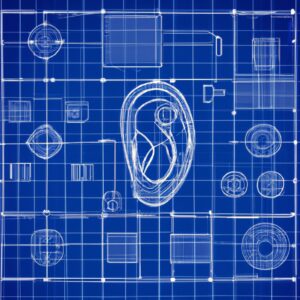Hear Yourself

In their post-training surveys, my clients consistently rank “hearing myself” as an aha moment.
We are talking about the benefit of hearing yourself speak.
When clients realize that they will have to hear their recorded selves in their coaching session, a common response is, “I hate having to hear my voice.”
It is not only the sound of our voice that scares us. It also is about having to clearly see, hear, and feel the shortcomings in something we hoped was just fine.
Hearing ourselves brings us face to face with how others perceive how we speak.
It is a powerful tool. Let’s call it “Hearing Analysis.”
So, let’s start.
Consider the following two statements:
Version A:
“If we do this, we can fix everything.”
Version B:
” Here is why it matters. [PAUSE] If we do this, we can fix everything.”
First, scan the two versions above with your eyes. Take them in “readingly,” if you will. Try to feel how listeners will react to each version. Observe your own emotional reaction as you read. Take your time.
Now, observe your brain as you listen to an audio recording of these two sentences.
![]()
Go to https://est.io/3we to hear the audio.
Play the recording twice.
Do you notice the difference between the two versions in your brain’s reaction?
The power of the pause is self-evident.
You might have sensed some of that difference just from reading, but when you hear it, the difference jumps out.
Through hearing you realize that the version with the pause has much more impact.
Realizing this is not an intellectual analysis. Instead, we simply feel it. It is instant. It is intuitive.
Hearing ourselves is the most effective way of analyzing the impact of something we are planning to say. It produces clear emotions that simplify an analysis. Think of emotions as the brain’s quickest way of producing easy-to-read output on complex data input.
Research has shown that the amygdala in our brain (the seat of emotion) is highly sensitive to sound. We all know this from the surge of fear a suspicious sound can create in us, for example, when we are alone at home. That may explain why hearing produces such a useful and sensitive emotional response.
Here is a 6-step how-to mini framework for using Hearing Analysis.
![]()
Framework for Hearing Analysis
- Start with a written text or just say something you might use in a conversation or other speaking situation.
- Audio-record yourself.
- Listen to the recording.
- Sense how it “feels.”
- Revise the script.
- Repeat steps two to five until the text feels right.
We will be using Hearing Analysis throughout this book. I urge my clients to make it part of their toolkit. Use Hearing Analysis to improve how you do many things: Make an important point. Draft an important email. Ask a potential donor to contribute.
![]()
Key takeaways
- Hearing ourselves in a recording enables us to quickly and dramatically improve how we talk (and write).
- We fear the tool in the beginning because of its power to present us with clarity and truth about ourselves.
- That initial aversion goes away quickly once you realize the value of this Hearing Analysis.
![]()
Next steps
- Grab a sticky post-it note and write down “Use Hearing Analysis!!!”
- Put the note someplace where you will see it every day. On your computer monitor, for example.
- Start using Hearing Analysis frequently.
